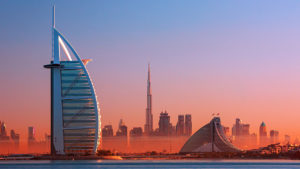Dubai is arguably the most luxurious mega-city in the world; it is an artwork in itself. This is largely due to the abundance of uniquely extravagant architecture. The city of Dubai has transformed from a desert to a world-renowned city in only a few decades. Having grown up in Dubai myself during the early 2000s, it is remarkable that the city is almost unrecognizable to me following the numerous advancements in a short time frame. This begs the question, how has Dubai managed this? Just like many other extraordinary success stories, a key tool is exploitation. The exploitative strategies employed in Dubai’s quest for greatness are so integrated and widespread that they are the basis of Dubai’s success. The majority of Dubai’s workforce consists of migrant workers who have left their families in impoverished areas to search for work opportunities. Unfortunately, these workers are met by a scam; they are severely underpaid; they are required to pay large sums to employment agencies in their home countries; they do not have any collective bargaining rights, and they are subjects of the Kafala system (a sponsorship system that restricts workers’ movement by taking their passports). Away from the lavish areas in Dubai are the many camps where migrant workers are housed, albeit in horrifying conditions. How do architects feel about the fact that their magnificent designs are only made possible through the agonizing efforts of who some deem “modern slaves”? Undoubtedly, the average architect will not encourage the exploitation of labor. However, many architects do not oppose it either. Architects do have a moral duty to encourage fair practices, however, this does not seem to have an impact. There are laws prohibiting the exploitation of workers, but, laws are only as good as their enforcement. Should architects have a legal duty to avoid exploitative practices? The easy answer is yes. But, we need to consider if this would even be possible.
Architects often only have power spanning the creative and administrative decisions of the project. The building owner has the ultimate say. So, if the owner refuses to reject exploitative practices, the architects cannot overthrow the owner’s power. That is, of course, unless the architects engage in a strike. This may be unlikely for a few reasons. Architects will be motivated by the money. Also, architects who do not abide by the owner can easily be replaced by others who disregard any ethical issues. Thus, if a strike can never be widespread enough to cease the production of buildings, are there even any alternatives? The ruling class of the Gulf countries blatantly support the use of exploitative practices to further the advancement of their cities. An example of this is when architect McGeehan was banned from entering the United Arab Emirates after vocalizing his refusal to participate in exploitative projects. Thus, it is unlikely for legal means, which restrict the highly productive forced labor practices, to be implemented.
Ultimately, architects should have a legal duty to require fair labor practices. However, this is unlikely to materialize as those creating the laws are benefiting from the exploitation, and have no sufficient incentive to change the status quo. A much greater reform would be required, which could begin with prominent architects speaking out on the matter. This being said, there are instances where architects refuse to comment on the human rights abuses involved in their projects, as they primarily aim to protect their reputations. These architects are silently endorsing the exploitation by disregarding efforts to curb it. Perhaps then, it is more important to promote a stronger moral duty in architects before attempting to incorporate legal duties. Legal reform cannot be possible or effective if architects do not feel morally inclined to encourage change. Dubai can and should sacrifice its speedy growth in exchange for social progression and increased human rights protection. Dubai’s beauty does not need to equal pain.









it’s not right that a city that is that popular and well-known could have so much suffering and exploitation as a result of getting there. The gentrification that goes on there needs to be addressed and it is not right that in such a luxurious city. there definitely needs to be more laws and limitations on practices so that there isn’t so much imbalance in wealth.